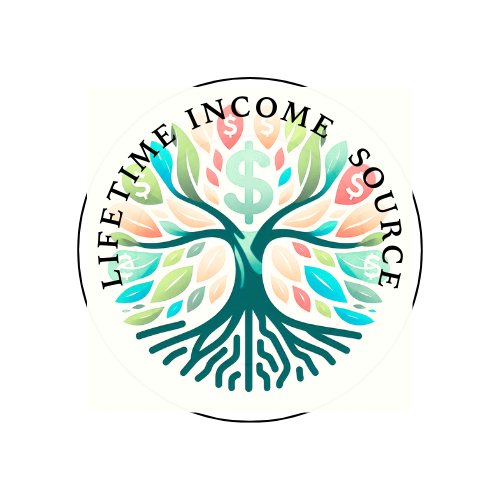
I will lay out the steps you’ll need to take to get your financial ducks in a row before we jump into the strategies that’ll keep the cash rolling in during your golden years. Understanding your cash flow needs, which refers to the amount of money you need to cover your living expenses and other financial obligations, isn’t just about looking at numbers; it’s about ensuring your money aligns with the retirement life you’ve envisioned.
You’re about to embark on a journey to set realistic financial goals. When it comes to retirement, everyone’s dream is unique. Whether it’s traveling the world or tending to your garden, I’m here to help you map out your finances and achieve that dream.
Now, there’s a bit of homework involved—adjusting your retirement budget to align with your lifestyle. It’s not just critical; it’s absolutely necessary. This is about more than just cutting back; it’s about reshaping your finances to support your retirement adventures for years.
That’s going to include understanding your post-retirement income and expenses. This foundational work is a springboard for Section 2, where I’ll dive into the nuts and bolts of income strategies. From social security to rental properties, there’s a pot of gold in various income streams, and I’m here to show you how to find it.
Income Strategies for a Sustainable Retirement
Retirement means shifting from saving to spending your nest egg, which can feel daunting. But hang tight. I will walk you through some income strategies that can give you a steady stream without draining your funds too quickly.
First, let’s talk about maximizing your social security benefits. Timing is everything here. You can start taking benefits as early as 62, but waiting until full retirement age or even until 70 can significantly bump up your monthly checks. This decision is a personal one, so let’s look at your overall financial picture to find the sweet spot.
Annuities are another avenue worth exploring. Think of these as a reverse mortgage on yourself. You put in a lump sum, and in return, you get a consistent, predictable income. Choose something that resonates with you; there are fixed, variable, and indexed annuities. Each type offers different benefits and risks.
You may love the idea of seeing your investments pay you. Dividend-yielding investments, like certain stocks or mutual funds, can provide regular income. It’s vital to balance high-dividend options with growth potential to keep up with inflation and protect your purchasing power.
How about turning a passion into profit? Real estate can be a robust income source. If you’ve got a vacation home, a spare room, or even an in-law suite, renting these out can supplement your income. This could be a full-time gig or a part-time, Airbnb-style arrangement, so go with what suits your energy and commitment levels.
Before we even think about tapping into those retirement accounts, let’s gear up to transition smoothly into the nuts and bolts of drawing down your assets without harming the golden goose. You’ll need a smart withdrawal strategy to keep the money flowing for the long haul. Up next, we’ll dive into what that looks like.
Smart Withdrawal Tactics to Preserve Capital
You’ll find out about the intricacies of withdrawing your savings in a way that safeguards your capital while providing for your living expenses. It’s not just about how much you withdraw but also about understanding the tax impacts and the timing of your withdrawals.
A popular method many retirees lean on is the 4% rule. This rule suggests that you can withdraw 4% of your initial retirement savings each year, adjusted for inflation, without running out of money for at least 30 years.
In other words, if you have $ 1 million saved for retirement, you could withdraw $ 40,000 in the first year, and adjust this amount for inflation in the following years. But don’t worry too much about sticking to this rule rigidly. You can always adjust your approach down the road based on the performance of your investments and your actual spending.
Speaking of taxes, they can eat into your retirement funds if not planned for properly. Withdrawals from tax-deferred accounts like traditional IRAs or 401(k)s are taxable, while those from Roth accounts aren’t. It’s important to anticipate these taxes when planning your withdrawal strategy. Choosing a mix of taxable, tax-deferred, and tax-free accounts to withdraw from each year can help manage your tax bill.
You’ll have to factor in Required Minimum Distributions or RMDs once you reach a certain age. RMDs dictate the minimum amount you must withdraw annually from certain retirement accounts after you turn 72. Failing to take out the correct amount could lead to a hefty penalty, so you must include RMDs in your withdrawal strategy.
What’s next? You’ll want to ensure you’re not left in a tight spot should unexpected expenses arise. That’s heading into our fourth and final section, where I will discuss the importance of putting together a contingency plan to maintain your cash flow in retirement.
Maintaining Your Cash Flow Through Contingency Planning
If you’ve made it this far, you understand the importance of smart withdrawal tactics for preserving your capital in retirement. But let’s not overlook the value of a good contingency plan. After all, unexpected expenses don’t retire when you do! Planning for the unpredictable is critical to maintaining your cash flow and ensuring financial peace of mind.
First off, building an emergency fund is non-negotiable. I’m a big proponent of having a cushion to fall back on. This fund should cover several months of living expenses. It can be a lifesaver when dealing with health emergencies, home repairs, or other surprise costs.
Long-term care is another factor you can’t afford to ignore. The cost of long-term care can be staggering, and Medicare often doesn’t cover it all. Considering long-term care insurance might seem like an extra expense now, but trust me, it’s worth exploring to protect your nest egg from potential future healthcare costs.
Flexibility is your best friend in retirement. You’ve probably realized by now that financial circumstances can shift. Market changes, inflation, or changes in your personal life mean you’ll need to stay adaptable. Regularly reviewing and adjusting your financial plan helps you stay on top of these changes and maintain your cash flow.
The key to successfully managing your cash flow in retirement is not just about how you start, but how you adapt along the way. Choose strategies that resonate with you, and remember, your first attempt doesn’t need to be your last. Stay flexible, adjust your approach as necessary, and you’ll navigate retirement with greater confidence and security.
Here’s a little transparency: Our website contains affiliate links. This means if you click and make a purchase, we may receive a small commission. Don’t worry, there’s no extra cost to you. It’s a simple way you can support our mission to bring you quality content.


